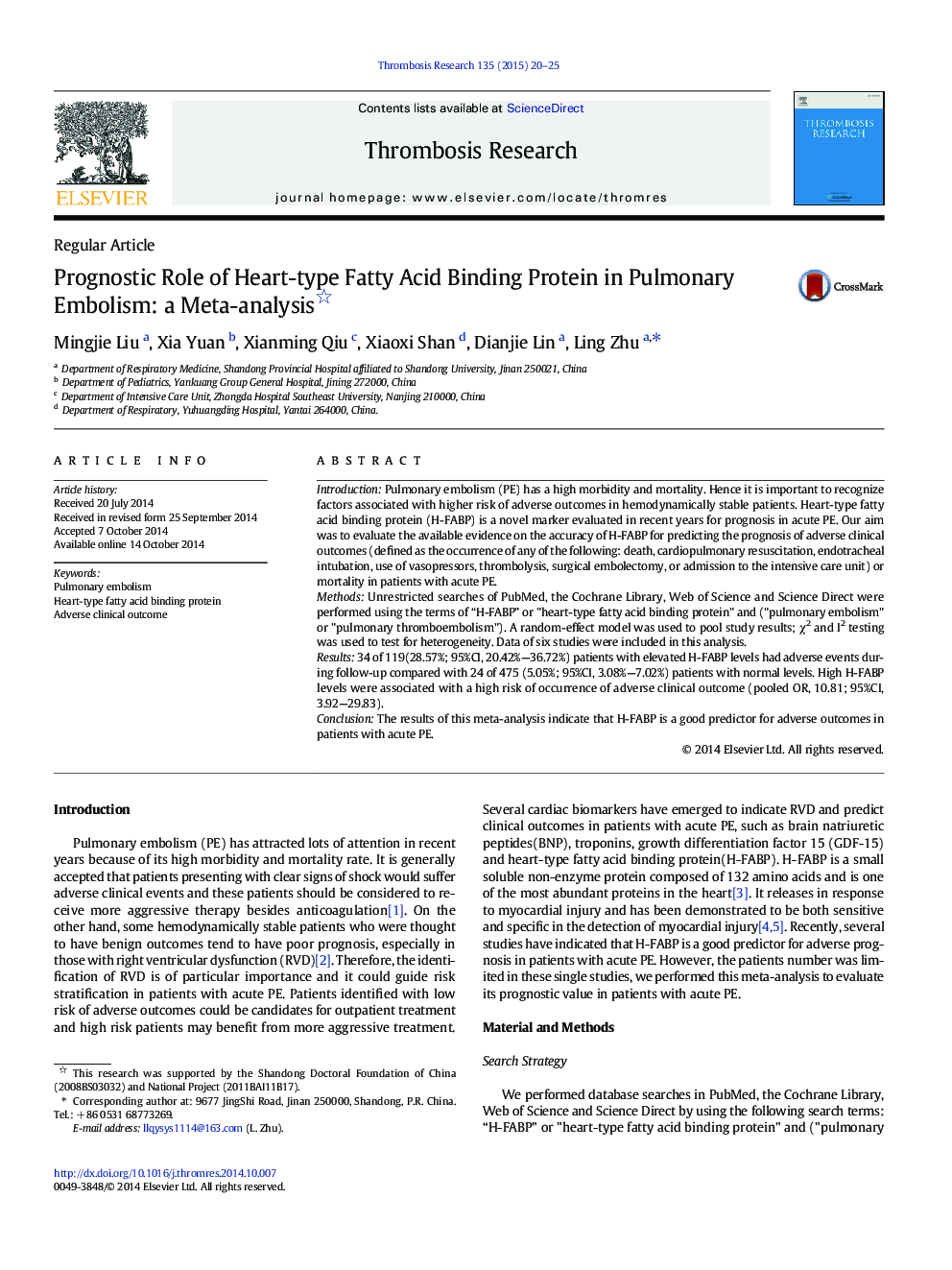| کد مقاله | کد نشریه | سال انتشار | مقاله انگلیسی | نسخه تمام متن |
|---|---|---|---|---|
| 3027098 | 1182939 | 2015 | 6 صفحه PDF | دانلود رایگان |

• We include six studies in this meta-analysis to evaluate the prognostic value of H-FABP in patients with acute PE.
• High H-FABP levels are associated with a high risk of occurrence of early adverse outcomes in patients with acute PE.
• H-FABP can be a member in risk stratification algorithms and identify patients who could benefit from early intervention.
• The results should be cautiously interpreted and requires a combination of clinical features and other tests.
IntroductionPulmonary embolism (PE) has a high morbidity and mortality. Hence it is important to recognize factors associated with higher risk of adverse outcomes in hemodynamically stable patients. Heart-type fatty acid binding protein (H-FABP) is a novel marker evaluated in recent years for prognosis in acute PE. Our aim was to evaluate the available evidence on the accuracy of H-FABP for predicting the prognosis of adverse clinical outcomes (defined as the occurrence of any of the following: death, cardiopulmonary resuscitation, endotracheal intubation, use of vasopressors, thrombolysis, surgical embolectomy, or admission to the intensive care unit) or mortality in patients with acute PE.MethodsUnrestricted searches of PubMed, the Cochrane Library, Web of Science and Science Direct were performed using the terms of “H-FABP” or "heart-type fatty acid binding protein" and ("pulmonary embolism" or "pulmonary thromboembolism"). A random-effect model was used to pool study results; χ2 and I2 testing was used to test for heterogeneity. Data of six studies were included in this analysis.Results34 of 119(28.57%; 95%CI, 20.42%—36.72%) patients with elevated H-FABP levels had adverse events during follow-up compared with 24 of 475 (5.05%; 95%CI, 3.08%—7.02%) patients with normal levels. High H-FABP levels were associated with a high risk of occurrence of adverse clinical outcome (pooled OR, 10.81; 95%CI, 3.92—29.83).ConclusionThe results of this meta-analysis indicate that H-FABP is a good predictor for adverse outcomes in patients with acute PE.
Journal: Thrombosis Research - Volume 135, Issue 1, January 2015, Pages 20–25